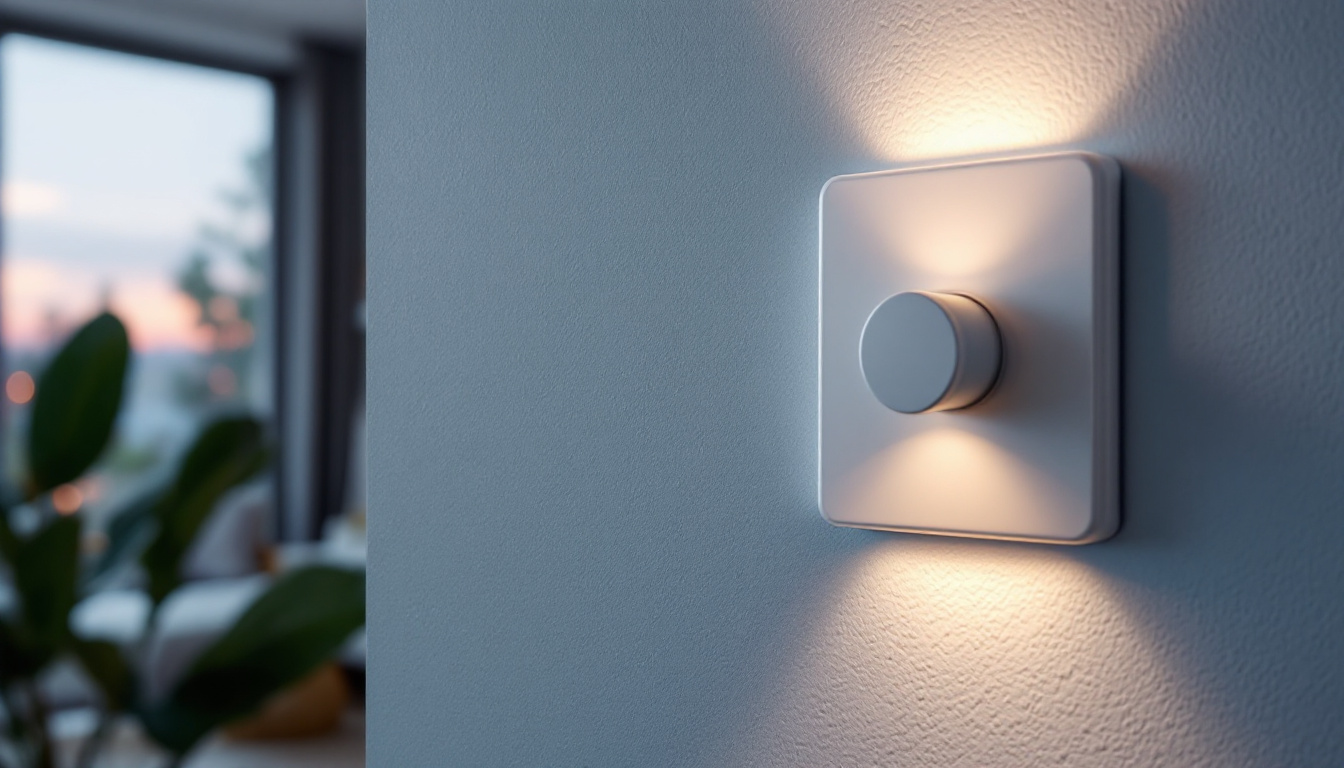
In recent years, the lighting industry has undergone a significant transformation, particularly with the advent of LED technology. As energy-efficient lighting solutions have gained popularity, the demand for dimmers compatible with LED lights has surged. This article explores the evolution of dimmers for LED lights, examining their importance, functionality, and the advancements that have shaped their development.
Dimming technology plays a crucial role in enhancing the ambiance of a space. By allowing users to adjust the brightness of their lighting, dimmers contribute to energy savings, extend the lifespan of lighting fixtures, and create a more comfortable environment. In commercial settings, the ability to control lighting levels can significantly impact productivity and mood.
Moreover, the integration of dimmers with LED lights offers a unique opportunity for energy conservation. Traditional incandescent bulbs operate on a different principle than LEDs, which necessitates the development of specialized dimming solutions. This evolution has not only improved the functionality of LED lighting but has also paved the way for innovative designs and applications.
As society increasingly prioritizes sustainability, the role of dimmers in energy conservation cannot be overstated. Dimming LED lights can reduce energy consumption by adjusting the power supplied to the bulbs. This capability is particularly beneficial in commercial and residential settings where lighting is often left on longer than necessary.
Furthermore, the environmental impact of lighting is significant. By employing dimmers, users can contribute to reducing their carbon footprint while enjoying the benefits of modern lighting technology. This alignment with sustainability goals has made dimming solutions an essential consideration for lighting contractors and designers alike.
In addition to energy savings, dimmers enhance the user experience by providing flexibility in lighting design. Whether it’s creating a cozy atmosphere for a dinner party or brightening a workspace for increased productivity, the ability to adjust lighting levels is invaluable. This adaptability is particularly important in multi-functional spaces where different activities require varying levels of illumination.
Moreover, the psychological effects of lighting cannot be overlooked. Studies have shown that lighting can influence mood, behavior, and even cognitive performance. By incorporating dimmers into lighting designs, contractors can create environments that cater to the needs and preferences of occupants, ultimately leading to greater satisfaction and well-being.
The journey of dimming technology has been marked by significant advancements that have shaped how lighting is controlled. From the early days of simple rheostats to the sophisticated digital dimmers available today, the evolution has been driven by the need for compatibility with various lighting technologies, including LEDs.
Initially, dimmers were designed primarily for incandescent bulbs, utilizing resistive methods to reduce voltage and, consequently, light output. However, as the lighting industry shifted towards more energy-efficient solutions, the limitations of traditional dimming methods became apparent. The need for new technologies that could effectively manage the unique characteristics of LED lighting emerged.
The transition from analog to digital dimming marked a significant milestone in the evolution of lighting control. Digital dimmers utilize advanced technology to modulate the power supplied to LED lights, allowing for smoother and more precise dimming capabilities. This shift has not only improved performance but has also enabled features such as remote control and integration with smart home systems.
Digital dimmers can communicate with other devices, allowing for synchronized lighting control across multiple fixtures. This capability is particularly advantageous in larger installations, where consistent lighting levels are essential. As the demand for smart lighting solutions continues to grow, digital dimmers are becoming a standard component in modern lighting designs.
One of the primary challenges in the evolution of dimmers for LED lights has been compatibility. Unlike incandescent bulbs, which have a linear response to voltage changes, LED lights can exhibit flickering, buzzing, or even failure to dim when paired with incompatible dimmers. This issue has led to the development of specific dimming technologies tailored for LED applications.
Leading manufacturers have invested in research and development to create dimmers that are compatible with a wide range of LED products. This includes the introduction of trailing-edge and leading-edge dimming technologies, which have been designed to optimize performance and minimize issues associated with flickering and noise. As a result, contractors can now offer clients a more reliable and efficient lighting solution.
With the evolution of dimming technology, various types of dimmers have emerged, each designed to cater to specific applications and user preferences. Understanding the differences between these dimmers is essential for lighting contractors seeking to provide the best solutions for their clients.
Leading-edge dimmers, also known as forward-phase dimmers, are one of the most common types used with incandescent and halogen bulbs. They work by cutting off the initial part of the AC waveform, allowing for a simple and effective dimming solution. However, when used with LED lights, leading-edge dimmers may result in flickering or limited dimming range unless specifically designed for LED compatibility.
Despite their limitations with LEDs, leading-edge dimmers are still popular in many applications due to their affordability and ease of installation. Contractors should ensure that the leading-edge dimmers they choose are rated for use with LED lighting to avoid compatibility issues.
Tailing-edge dimmers, or reverse-phase dimmers, have gained popularity as a more suitable option for LED lights. They work by cutting off the latter part of the AC waveform, providing a smoother dimming experience and reducing the likelihood of flickering. Trailing-edge dimmers are often more efficient and can handle a wider range of LED products, making them a preferred choice for many contractors.
Additionally, trailing-edge dimmers tend to produce less heat, which can prolong the lifespan of both the dimmer and the LED fixtures. This makes them an excellent choice for installations where energy efficiency and longevity are priorities.
As technology continues to advance, smart dimmers have emerged as a game-changer in the lighting industry. These dimmers can be controlled remotely via smartphones, tablets, or voice-activated devices, providing unparalleled convenience and flexibility. Smart dimmers often integrate with home automation systems, allowing users to create customized lighting scenes and schedules.
For lighting contractors, recommending smart dimmers can enhance the overall value of a lighting installation. Clients appreciate the ability to control their lighting from anywhere, and the energy-saving features often included in smart dimmers can further appeal to environmentally conscious consumers.
When installing dimmers for LED lights, several considerations must be taken into account to ensure optimal performance and user satisfaction. Lighting contractors play a vital role in guiding clients through these considerations, helping them choose the right dimming solutions for their specific needs.
One of the most critical factors in selecting a dimmer is its wattage rating. Each dimmer is designed to handle a specific load, and exceeding this limit can lead to overheating or failure. When working with LED lights, it is essential to consider the combined wattage of all fixtures on the dimmer circuit to ensure compatibility.
Contractors should also be aware that LED lights often have a lower wattage than traditional incandescent bulbs. This means that a dimmer rated for a certain wattage may be suitable for fewer LED fixtures than it would be for incandescent ones. Proper calculations and recommendations are crucial to avoid potential issues during installation.
Understanding the different load types is essential when selecting dimmers for LED lights. Dimmers can be designed for specific load types, including resistive, inductive, and electronic loads. Ensuring that the chosen dimmer matches the load type of the LED fixtures is vital for achieving optimal performance.
Additionally, contractors should be aware of the potential for mixed loads on a single dimmer circuit. If a dimmer is controlling both LED and incandescent fixtures, it is crucial to select a dimmer that can handle both load types effectively to avoid complications.
After installation, testing the dimmer and the connected LED lights is essential to ensure everything functions as intended. Contractors should check for flickering, buzzing, or any other irregularities that may indicate compatibility issues. If problems arise, troubleshooting may involve adjusting settings, replacing the dimmer, or even reevaluating the compatibility of the LED fixtures.
Providing clients with guidance on how to operate and troubleshoot their dimming systems can enhance their overall experience. Offering ongoing support and resources can also help build trust and establish a long-term relationship between contractors and clients.
The future of dimming technology for LED lights holds exciting possibilities as advancements continue to emerge. As the demand for energy-efficient lighting solutions grows, manufacturers are likely to invest further in research and development to create even more innovative dimming solutions.
One area of potential growth is the integration of artificial intelligence (AI) and machine learning into dimming systems. These technologies could enable adaptive lighting solutions that automatically adjust based on occupancy, time of day, or user preferences. Such advancements would not only enhance user experience but also contribute to further energy savings.
The integration of dimmers with smart home systems is expected to become more prevalent. As homeowners increasingly adopt smart technology, the demand for seamless integration of lighting control with other home automation features will rise. Dimmers that can communicate with security systems, HVAC controls, and other smart devices will provide users with a more cohesive and efficient home environment.
For lighting contractors, staying abreast of these trends will be crucial in meeting client expectations and providing cutting-edge solutions. By embracing the future of dimming technology, contractors can position themselves as leaders in the evolving lighting industry.
The emphasis on sustainability will remain a driving force in the lighting industry. As regulations and consumer preferences shift towards greener solutions, the development of energy-efficient dimming technologies will be paramount. Contractors who prioritize sustainable practices and products will not only meet market demands but also contribute to a more environmentally friendly future.
In conclusion, the evolution of dimmers for LED lights has transformed the lighting industry, offering enhanced functionality, energy efficiency, and user experience. As technology continues to advance, lighting contractors have the opportunity to provide innovative solutions that meet the needs of their clients while contributing to a more sustainable future.
Ready to elevate your lighting installations with the latest in dimming technology for LED lights? Look no further than LumenWholesale, where we provide contractors with exceptional, spec-grade lighting products at the most competitive wholesale prices. Say goodbye to local distributor markups and hello to a vast selection of industry-standard lighting solutions that promise reliability and high performance for every project. Plus, with the convenience of free shipping on bulk orders, you can enjoy premium lighting without hidden fees or compromises. Don’t miss out on the perfect combination of quality, affordability, and convenience. Discover the best value in wholesale lighting by visiting LumenWholesale today.

Discover essential compliance tips for bronze solar outdoor lights.

Discover expert tips and techniques for lighting contractors to master the installation of suspended ceiling recessed lights.

Discover essential tips and expert techniques for lighting contractors to efficiently replace fans.

Discover the top strategies lighting contractors use to maximize the benefits of 3500K LED bulbs.